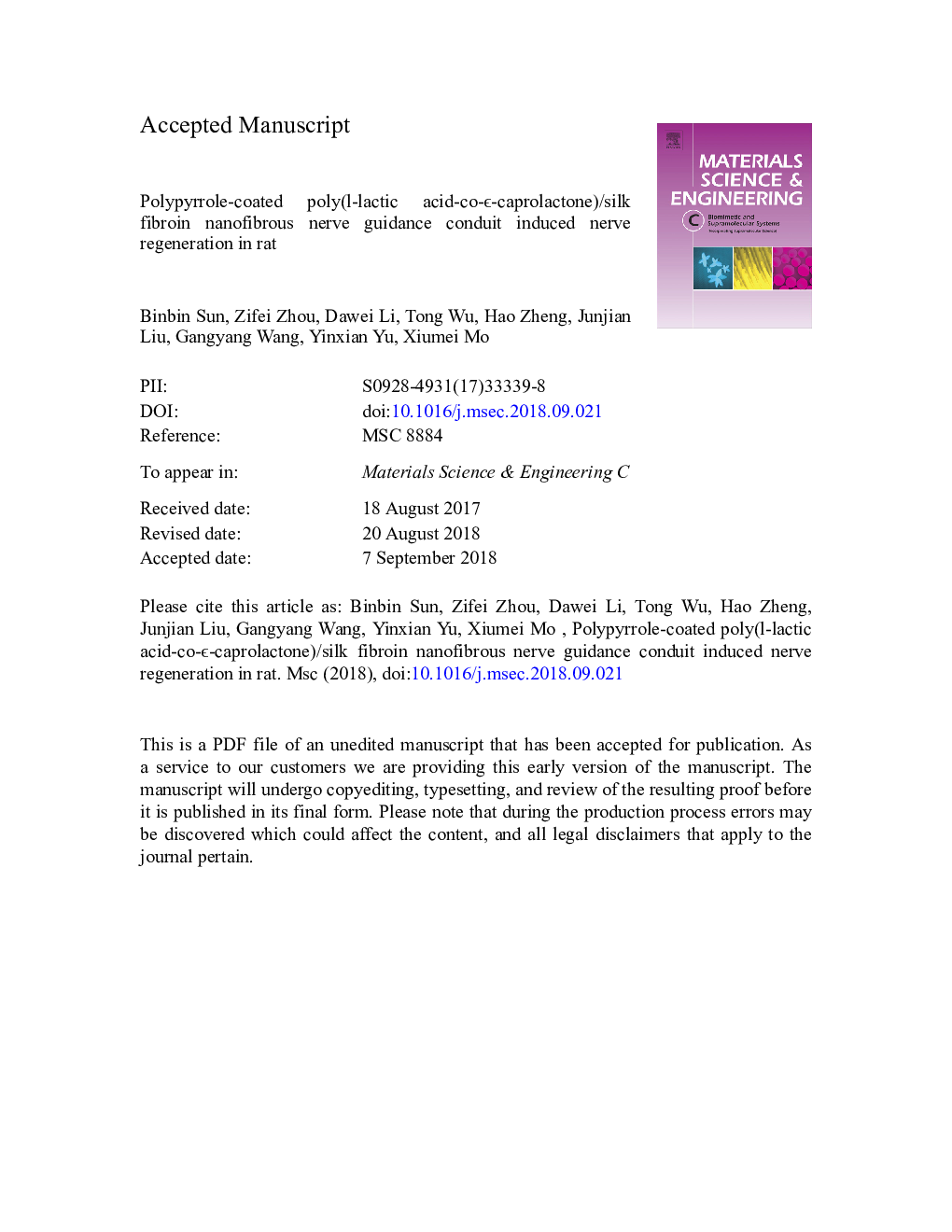| Article ID | Journal | Published Year | Pages | File Type |
|---|---|---|---|---|
| 10155310 | Materials Science and Engineering: C | 2019 | 25 Pages |
Abstract
According to our previous study, polypyrrole (Ppy) possessed good conductivity and non-cytotoxicity. In this study, the surface of electrospun poly(l-lactic acid-co-ε-caprolactone)/silk fibroin (PLCL/SF) was coated with Ppy to fabricate Ppy-coated nerve guidance conduit (NGC). Firstly, the presence of Ppy on the prepared NGC was characterized and confirmed by scanning electron microscopy (SEM), X-ray photoelectron spectroscopic spectra (XPS) and Fourier transforms infrared spectroscopy (FTIR). Subsequently, Ppy-coated NGC was used to repair a 10â¯mm sciatic nerve gap in vivo. 4 and 12â¯weeks after implantation, the regenerated nerve tissues on defect sites were removed and sectioned for further evaluation. Histological analysis with hematoxylin-eosin (HE), toluidine blue (TB), and luxol fast blue (LFB) staining indicated that the coated Ppy could promote SCs proliferation in early post-surgery, and enhance myelin formation in later post-surgery. In consideration of immunofluorescence and morphology observation with SEM and TEM, it showed that the nerve regeneration of Ppy-coated NGC group was close to autograft group, which was better than PLCL/SF NGC. In addition, walking track analysis indicated that Ppy-coated NGC group showed a similar performance compared with the autograft group, and significantly better than PLCL/SF NGC group. These promising results showed the potential of Ppy-coated NGC in peripheral nerve regeneration.
Related Topics
Physical Sciences and Engineering
Materials Science
Biomaterials
Authors
Binbin Sun, Zifei Zhou, Dawei Li, Tong Wu, Hao Zheng, Junjian Liu, Gangyang Wang, Yinxian Yu, Xiumei Mo,
